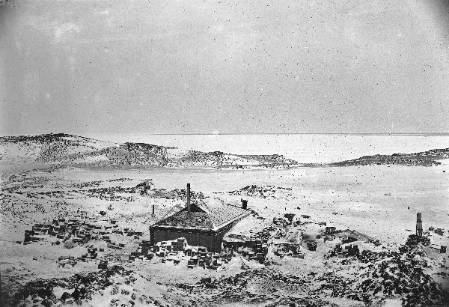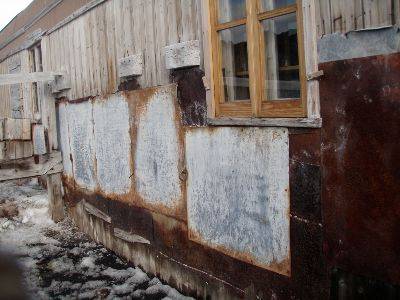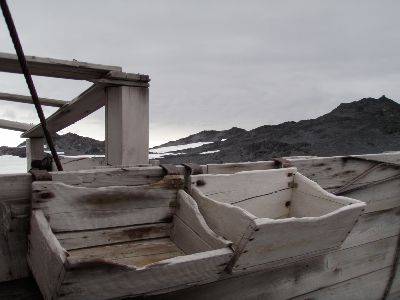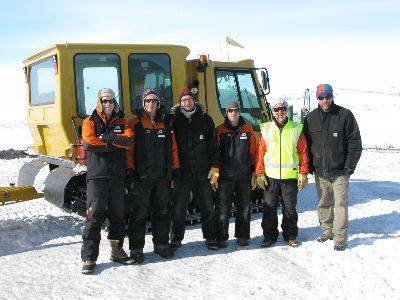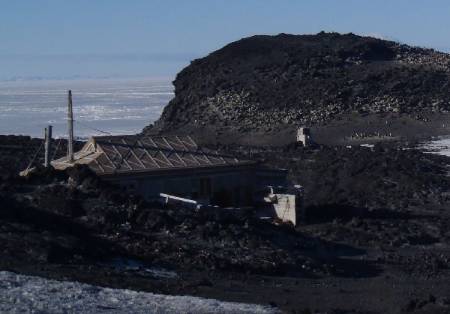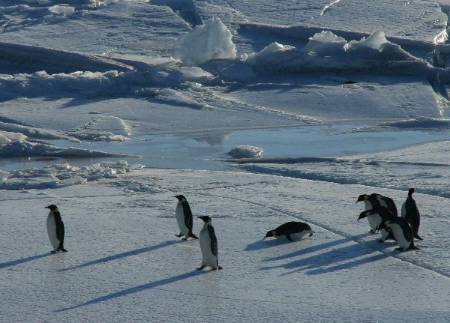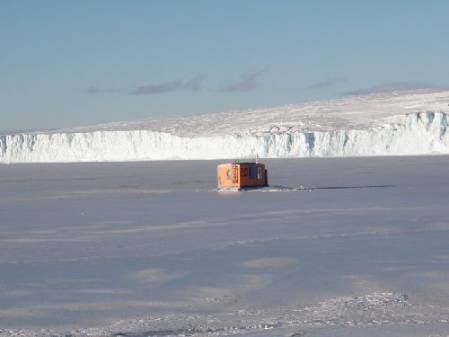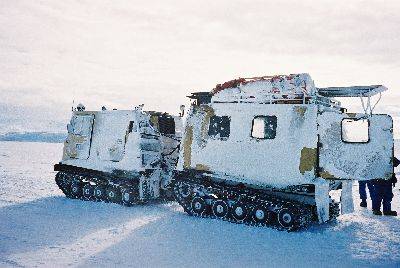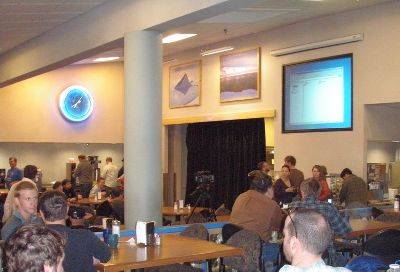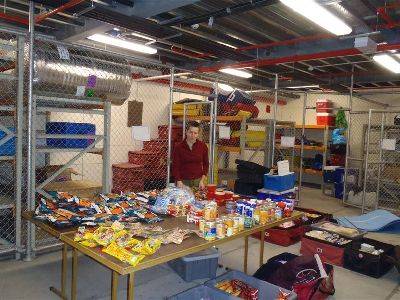Posted by Diana
Date: November 25, 2010
Temperature: - 6 degrees c
Wind Speed: 5 knots
Sunrise: Sun is up
Sunset
We have been working at Cape Royds on the hut built in February 1908 by the British Antarctic (Nimrod) Expedition of 1907-09, which was led by Sir Ernest Shackleton. It was also periodically used by the Ross Sea Party of Shackleton’s Imperial Trans-Antarctic Expedition of 1914-1917.
Royds in Snow - Circa 1908 Photographer unknown © Alexander Turnbull Library
It is a lovely setting for a hut, nested in hills of volcanic rock which have been scoured by glaciers and the harsh Antarctic weather.
Metal cladding on Stables © AHT/Diana
When we have visitors to the site one of the questions frequently asked is why is there metal sheeting on the side of the building? It is hard to tell but this area used to be the stables. If the visitor looks closely they will see the feed troughs. Shackleton had taken ten white Manchurian ponies to Antarctica because they were know to work well in cold conditions and it was hoped they would be of great assistance in sledging to the South Pole. The stable walls were constructed of wooden cases filled with food and the roof was canvas, with sledges used over the top to assist in supporting the roof. The metal sheets were put up to protect the wooden cladding on the hut from the ponies kicking. Today the canvas is gone but some of the cases and the feed troughs remain.
Feed troughs in Stables area © AHT/Diana



